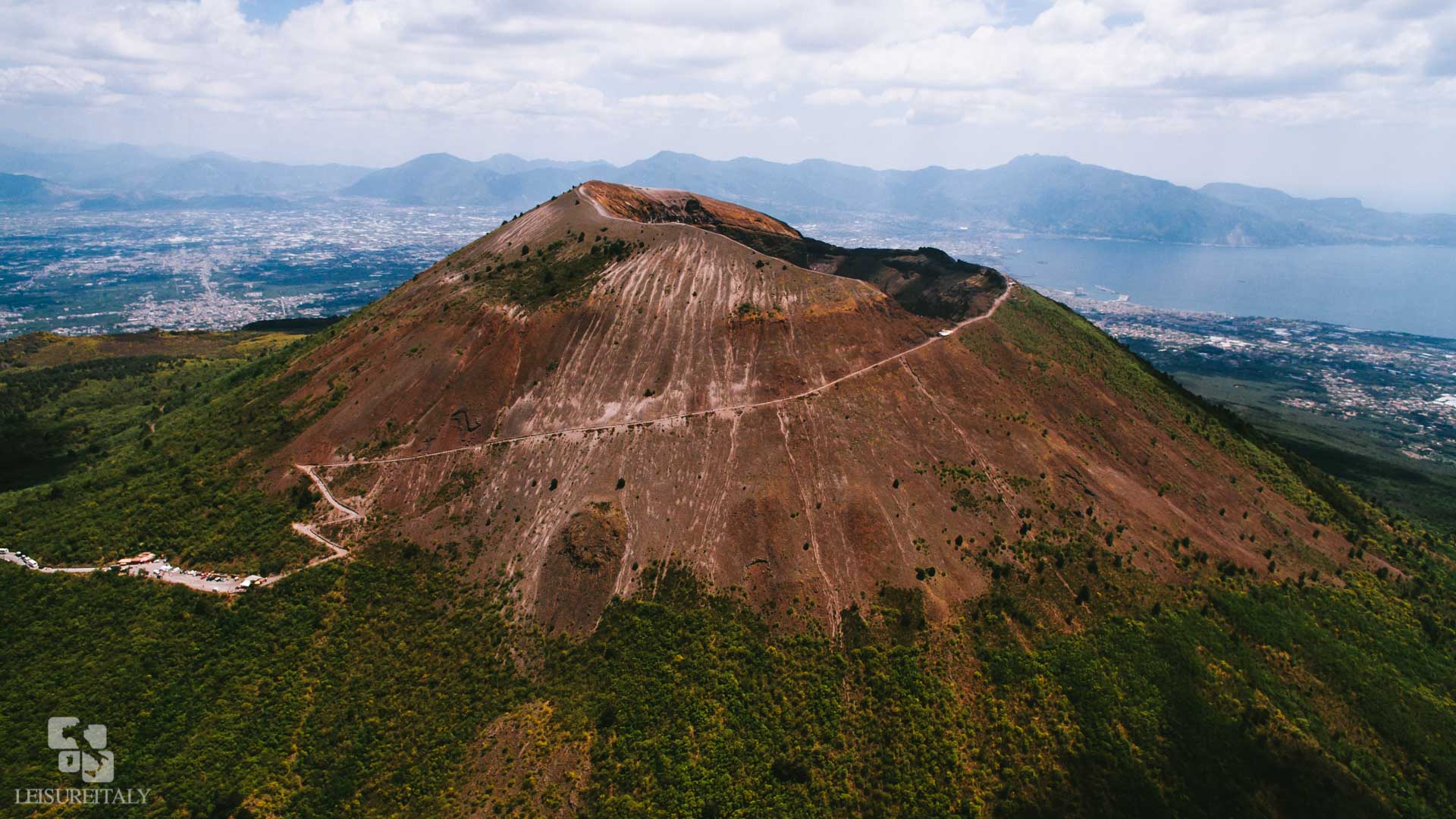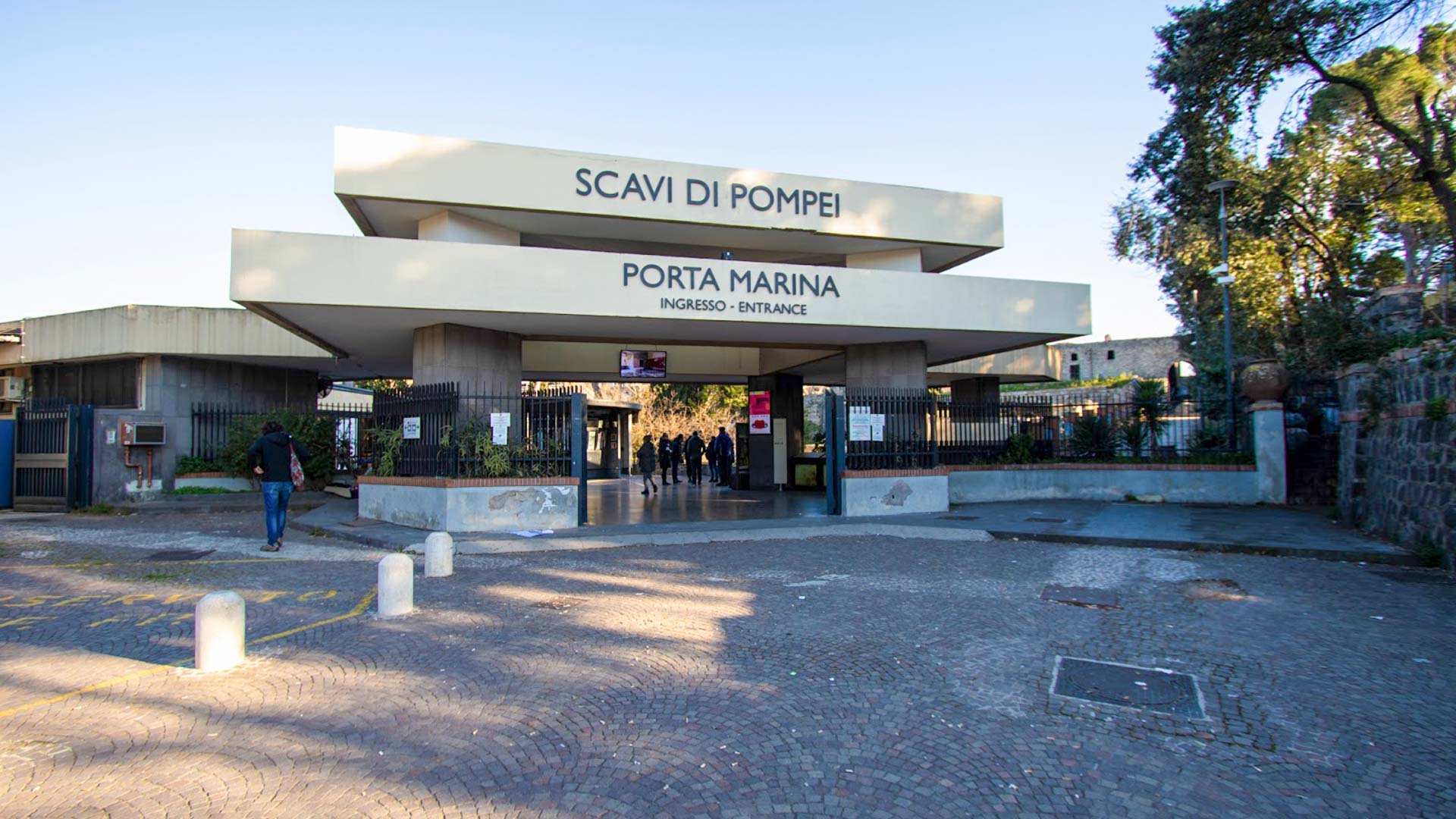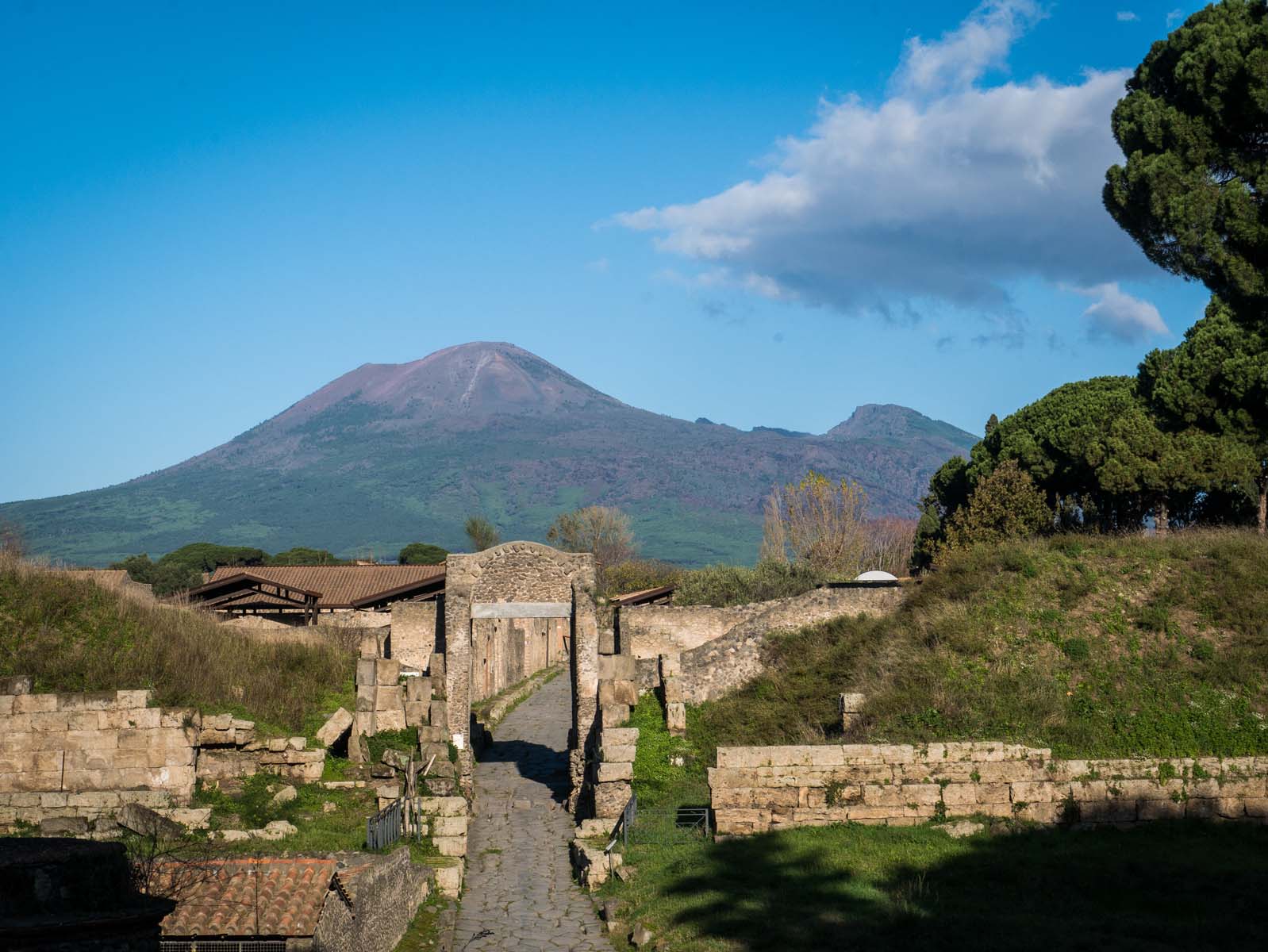The day will start with a scenic drive on the slopes of Mt Vesuvius. You will be driving across the National Park of Mt Vesuvius, through the pine reservation and next to the solidified lavas from the last eruption in 1944. On the way up you can already enjoy great views of Naples and the Bay. Also on view is the Volcanological Observatory, the first-ever founded in Europe in 1841 by the Bourbons of Naples!
After a 30-minute drive up, you will start on foot the ascent to the top of the crater. On your left the impressive silhouette of Mt Somma, which is part of the rim of the original volcano that erupted in 79 AD and buried Pompeii. The walk to the top requires about 25 minutes up the hill on a terrain mostly made out of volcanic ash. On the way up you can admire the Bay of Naples and Pozzuoli, and the three islands of Capri, Ischia, and Procida.
Once on the very top, there will be a short commentary of a volcanologist who will point out the main scientific facts about Mt Vesuvius. Marvel at the massive size of the main crater, its colors, and the steam geysers one can see during the wintertime.
If you wish, you can walk around half of the rim. On a clear day, the ancient Pompeii can be distinguished at the foot of the volcano. You can certainly take great pictures of Capri and the Sorrento Coast.
At midday, you can decide to stop at a winery on Mt Vesuvius for lunch or take a break for a light lunch directly at Pompeii. Please do not hesitate to ask your driver-guide for suggestions.
The Excavations of Pompeii are extended on a surface of approximately 160 acres. To make the best of your time Leisure Italy offers qualified guided service. Our guided walking tour shall be adapted to the interests and walking attitude of the participants. The following is a possible itinerary for a private guided walking tour. Please let us know would you have any special requests.
Once at Pompeii, you will first admire the city walls, dating back to the pre-Roman Pompeii (4 centuries BC). One of the best-preserved ancient gates is called Porta Marina that connected Pompeii and the port, with a path for charts and one for people.
Right before this gate, not-to-be-missed building is the Suburban Bath House, recently excavated and therefore very well preserved.
Once in town, you will be walking on the original road made of basalt stone (a volcanic rock). On the ground hundreds of little white spots made of travertine used to reflect torchlight (this is what nowadays people call “cat’s eye”).
Your attention will be caught by big blocks of basalt emerging from the road: they were stepping stones used by pedestrians to avoid getting wet when it rained; differently from other Roman towns, Pompeii didn’t have a complete sewer system because the city was built on top of a lava platform too hard to be worked.
City-center was called Forum. It hosts all the buildings with a public function: Religion (the Temple of Apollo, the Capitolium, and the Temple of the Emperor), Trade (the meat and fish market called Macellum, the textiles market headed by a priestess called Eumachia), Administration (the Basilica) and Politics (Comitium). Other facilities in the Forum were exchange offices, public restrooms, and a public scale (tabula mensurae) where to compare and weigh farmer’s products. In the Forum, you will also see a display of the famous human casts.
Close to the Forum, there were public Bath-Houses where both men and women (in different sections), poor and wealthy, and free and slaves could access daily hygiene. Pompeii had three such complexes in town, plus two right outside town. They all had the following facilities: a changing room (apodyterium), a tepid room (tepidarium), a hot room (calidarium) and a Gym (Palestra).
You will notice several places fronting the road with large vases built in a masonry counter: this is what the Romans called popinae, today’s taverns! These jars were full of food and beverages, and many ancient Pompeians would stop in such places for lunch.
You will recognize some of the bakeries of Pompeii, with their ovens and grinding machines: incredible but true, some round carbonized loaves of bread were found during the excavations. These finds are on exhibit at the Archaeological Museum of Naples with more carbonized organics such as almonds, pine cones, figs, dates, etc.
If you wish we can also explore the Brothel (Lupanare). There you can an interesting display of Roman frescoes featuring several erotic images! If the famous Lupanare is too busy with visitors, we can also see erotic frescoes at the Suburban Bath-House.
Do not miss the chance to discover Pompeii places for public performances: an outdoor Theater (for comedy and tragedy), an indoor theatre (Odeion, for mimes and declamation of poetry), and a big amphitheater (for games like gladiators or beast fights). You shall visit at least one of those places.
Pompeii is too big to be visited entirely in one day. Leisure Italy will make sure you see the highlights. Our optional guided tour aims to visit an example for each typology of building.
After the tour at Pompeii, if you wish, you can stop for a few minutes for a fresh-squeezed orange juice or to browse the souvenir shops.











Tour Reviews
Our private tour of Pompeii and Mount Vesuvius with wine tasting was an absolute highlight of our trip. From the moment we were picked up, everything was perfectly organized and tailored to our interests.
Our guide, Fabrizio, was a treasure trove of information. His passion for the history of Pompeii was infectious, and he shared fascinating insights that made our visit truly engaging. Exploring the ancient ruins with him felt like stepping back in time, and we were captivated by the stories of daily life in this once-thriving city.
The wine tasting was the perfect lunch. Cantina Del Vesuvio Winery, set against the backdrop of Vesuvius, was idyllic. We enjoyed a selection of delicious wines, accompanied by local dishes.
This tour is a fantastic blend of history, nature, and wine. It’s an experience we will cherish forever and highly recommend to anyone visiting the region. Don’t miss it!